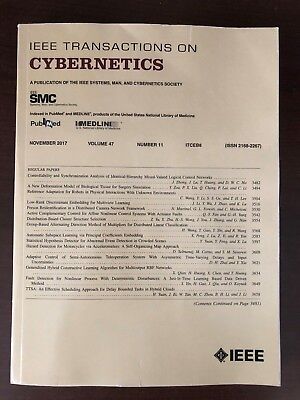求解多群机器人任务的可转移自组织通信模块的演化。
IF 10.5
1区 计算机科学
Q1 AUTOMATION & CONTROL SYSTEMS
引用次数: 0
摘要
分散多机器人协调的一个关键方面是通信。然而,除了简单的信号之外,文献中关于成功的通信进化的报道很少,成功在很大程度上取决于特定的任务和进化设置。因此,缺乏可以应用于不同任务的标准化通信框架,而不需要为每个新任务重新设计、重建或重新发展整个系统。在本文中,我们提出了一种新的通信模块,它不需要修改以用于不同的任务。每个机器人在虚拟通信空间中都有一个坐标(状态)。通信空间被划分为虚拟区域,每个区域都与物理行为相关联,例如寻找资源、趋光性或给电池充电。机器人的个体行为由其当前通信状态所属的区域决定。由于机器人可以在通信空间中导航,并不断地向范围内的邻居广播它们的坐标,因此机器人群可以有效地以自组织的方式协调它们的行为。我们证明了相同的进化通信模块在三个群体机器人任务中是有效的:1)机器人的物理聚集成所需大小的群体;2)理想群体几何形状的形成;3)基于时间角色分配的觅食任务。结果表明,该通信模块在所有任务中都提供了良好的可扩展性能,这是面向任务不可知的机器人群通信框架迈出的重要一步。本文章由计算机程序翻译,如有差异,请以英文原文为准。
Evolution of Transferable and Self-Organized Communication Modules for Solving Multiple Swarm Robotics Tasks.
A key aspect of decentralized multirobot coordination is communication. However, beyond simple signaling, there are only few reports in the literature on the successful evolution of communication, with successes largely dependent on specific tasks and evolutionary setups. Thus, there is a lack of standardized communication frameworks that can be applied to different tasks without the need to redesign, rebuild, or re-evolve the entire system for every new task. In this article, we propose a novel communication module that does not need to be modified for its use in different tasks. Each robot has a coordinate (state) in a virtual communication space. The communication space is partitioned into virtual regions, and each region is linked to a physical behavior, such as seeking resources, phototaxis, or recharging the battery. A robot's individual behavior is determined by the region to which its current communication state belongs. Since robots can navigate the communication space and continually broadcast their coordinates to neighbors within range, robot swarms can effectively coordinate their behavior in a self-organized manner. We demonstrate that the same evolved communication module is effective in three swarm robotics tasks: 1) the physical aggregation of the robots into groups of a desired size; 2) the formation of desired swarm geometries; and 3) a foraging task based on temporal role allocation. The results show that the communication module provides good and scalable performance in all tasks, representing a significant step toward a task-agnostic communication framework for robot swarms.
求助全文
通过发布文献求助,成功后即可免费获取论文全文。
去求助
来源期刊

IEEE Transactions on Cybernetics
COMPUTER SCIENCE, ARTIFICIAL INTELLIGENCE-COMPUTER SCIENCE, CYBERNETICS
CiteScore
25.40
自引率
11.00%
发文量
1869
期刊介绍:
The scope of the IEEE Transactions on Cybernetics includes computational approaches to the field of cybernetics. Specifically, the transactions welcomes papers on communication and control across machines or machine, human, and organizations. The scope includes such areas as computational intelligence, computer vision, neural networks, genetic algorithms, machine learning, fuzzy systems, cognitive systems, decision making, and robotics, to the extent that they contribute to the theme of cybernetics or demonstrate an application of cybernetics principles.
 求助内容:
求助内容: 应助结果提醒方式:
应助结果提醒方式:


